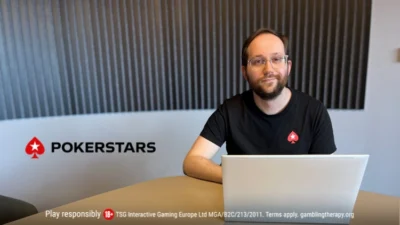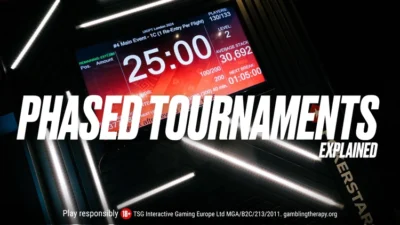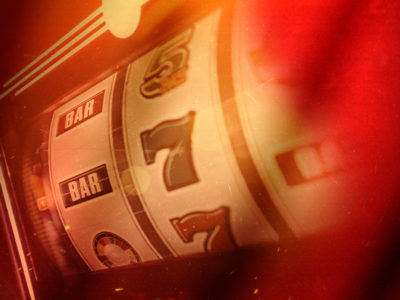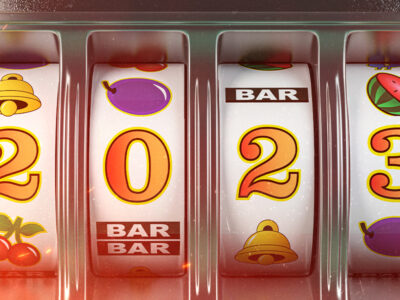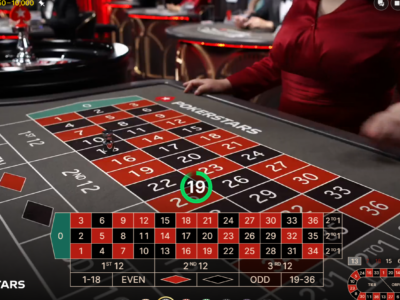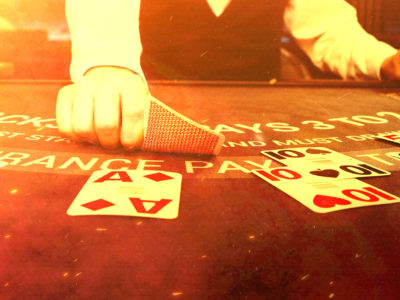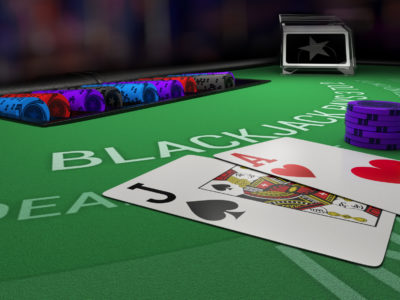Originally published: September 1, 2024
There aren’t many of us left anymore, but a handful of people will be spending their 20th year on the European Poker Tour.
It’s true. While the tour itself celebrates entering its third decade, there are also us veterans who have stuck around throughout. We’re still playing, still dealing, still broadcasting or still writing. And while much of what we see will always be the same, it’s on occasions like this that it can be fun to highlight some of the things that have changed.
We’ve seen the young guns become the superstars and seen the organisational chaos become a well-oiled machine. We’ve seen the way people play and talk about poker develop steadily and immeasurably through the years.
In no particular order, here are four things that have changed significantly during 20 years of the EPT.
WHERE AND WHEN: THE LOCATIONS AND THE HOURS
My first experience of the EPT took place next door to a brothel. This is unfortunately true. The Concord Card Casino, home of the first EPT Vienna, was in an industrial outskirt of Austria’s otherwise picturesque capital. The next building along was one of the city’s licensed adult clubs.
While this didn’t impact the poker much, it serves to illustrate a central change over the past 20 years. The EPT these days is a prestigious event that picks and chooses its destinations with great care. The size of the fields usually dictates that the premises need to be large, with hotel conference facilities usually the most appropriate. It also needs to be close enough to high-ranking hotels to accommodate players with a level of luxury in keeping with the EPT’s standards.
All of this might seem obvious these days, but it was not always the case. Plenty of EPT events in the early seasons took place in cramped casino conditions. Cigarette smoke choked the rooms and there was barely a hair’s breadth between tables. You’d be lucky to grab a quick burger in a tournament break. You’d likely need to join an enormous queue to visit the bathroom.

It’s thanks to the EPT that poker is now played in venues such as the Palais des Congrès de Paris
Elevating player experience
None of this is usually the case anymore. The EPT was the first tour in the world to elevate player experience to the top of its priorities. It made demands on venues to up their game else the business would go elsewhere. Licensing regulations often made things tricky, but with skilled negotiations, casino operators applied and succeeded in extending their licenses to cover bigger premises. Thus EPT Barcelona, for example, moved into the conference facilities of the Hotel Arts. Similarly, spectacular buildings such as the Hofburg Palace, Vienna, have even hosted events. The most recent EPT Paris took place in the Palais des Congrès.
The EPT helped hotels and other major venues realise that hosting poker events can become part of their core business.
It’s also worth noting how the EPT has worked to reduce the demands on players and staff by shortening tournament days. Though it remains difficult to predict precisely how long a tournament will take, players no longer have to play 13 or 14 hours every day. Back at the start, that kind of thing was normal. That first EPT Vienna event had a €2,000 buy-in and 297 entries. But it played from start to finish in two incredibly long days.
The EPT was again among the first tours to build into its schedules provisions for making sure poker tournaments finished in a vaguely agreeable time-frame. These included the introduction of shot clocks and the trimming of levels as the number of players reduced. All of these things came in gradually, in response to what organisers could see happening in the events. When you’ve got 20 years of experience, it’s easier to see what needs to change.
THE LANGUAGE OF POKER HAS CHANGED
Back in those early days of the EPT, as we stood in line for the bathroom, or swilled our beer during breaks, we’d say things like, “He made it three thousand, so I raised to find out where I was”, or “I thought he was at it but then he re-re-re raised me and I knew it was aces”.
People didn’t talk about three-bets or four-bets until the EPT had been going for at least five years. And nobody yet talked in terms of big blinds when discussing stack sizes. This way of discussing poker simply hadn’t yet been invented. Even if people had been thinking about strategy in this manner, the language to describe it hadn’t yet been codified.
I have always been fascinated by the term “aggressive” in poker and have noticed how its use has changed. In the early days of the EPT, the old school used to consider “aggressive” players to be a nuisance. They didn’t like it when people put in raises, re-raises or re-re-raises (raises, three-bets and four bets) unless they had solid, made hands.

Who are these pesky young “aggressive” players?
Aggressive or just standard?
But then for a period if you asked anybody what made one of the young hot-shots so good at poker, they’d say that they were especially “aggressive”. Players like Annette Obrestad, William Thorson, ElkY or Jason Mercier were good because they were aggressive. It meant they entered pots typically with a raise, and they would seize on and punish any weakness.
Eventually, of course, “aggressive” just became standard. It quickly became apparent that nobody had ever won a poker tournament by being more passive than everybody else. Occasionally “aggressive” is still used as a synonym for “reckless”, but it is scarcely relevant in a wider context. Everyone understands that winning poker is about assessing situations and applying appropriate pressure.
These days, none of the best players are any more aggressive than another. Now it’s more important to figure out a path through a hand and size your bets accordingly.
REDEFINING THE SHORT STACK
Check in the glossary of one of your old poker books (maybe one of the ones your mum bought you for Christmas one year when she heard you liked poker now) and you might see an especially curious entry: “Broomcorn’s uncle”. It used to be a pejorative term for someone who would nurse a short stack so tightly they didn’t commit a chip until it had all dwindled away.
You don’t hear anyone described as “Broomcorn’s uncle” any more, and if you did, it wouldn’t be pejorative. If you watch any of the action from the super high stakes tournaments that take place with increasing regularity these days, you’ll learn that there’s absolutely nothing wrong anymore with clinging on to a short stack. On the contrary: it’s smart play.
Back in the day, any stack of around 15 big blinds was “double up or bust” size. The greatest talents of the day talked about only being interested in winning the tournament. They said they were happy to stick their chips in in marginal spots rather than blinding out while trying to edge into the money.

Short stacks aren’t what they used to be
ICM changed poker
If you thought this was nonsense back then, you were right. These days, ICM considerations (something else that hadn’t been defined in 2004), dictate that every chip is sacred. There’s no such thing as a stack so small you can’t build it back up again.
Poker players nowadays are much more savvy about pay-jumps and bubble play in particular has changed dramatically. Although “stalling” remains controversial and features in many discussions between TDs, it is also widely considered sound play. There was once a time when perennial stallers were regarded as pariahs, nitting it up and ruining everyone else’s fun. While that is still partly true, everyone can see now that making the most money is the purpose of poker. Nursing a short stack, and clinging on to it, is often the best way to do that.
Broomcorn’s uncle was right.
HOW KEEPING TRACK OF THE ACTION HAS CHANGED
Lastly, so many things have changed behind the scenes that most players wouldn’t believe how lawless it used to be. PokerStars and the EPT has led the charge in making the game so much more accessible to armchair fans. The tour does everything it can to make sure coverage of its events is clear, accessible and accurate, and presented in a timely manner.
Back when the EPT started, if you wanted to know who was even playing a poker event, much less leading it, you’d almost certainly need to know someone in the room, who would need to be in good view of everyone else’s chip stack. Occasionally, organisers stuck handwritten player lists to a board just inside a tournament room, with a rough approximation of stacks scrawled beside the names. Anyone attempting to report on the tournament would likely be in no more privileged position as to players’ identities than any stranger just wandering in off the streets.

But powers that be on the EPT realised early on that there was a growing interest in people watching as well as playing tournament poker. The TV broadcasts were one thing, but people wanted to read hand histories (like they could at the online tables) and they wanted to know who was in the lead in real time. Thus, the EPT hired a dedicated media coordinator to help reporters bring up-to-date information to readers on various websites in numerous languages.
Media IDs changed reporting
The EPT was the first tour to introduce media ID cards — essentially, an ID number for players that would sit beside a chip stack. Reporters then cross-reference the number with player lists, using a name rather than “a player in a black hoody” or “the player in the big blind” in write-ups. PokerStars’ own reporters used to make it a badge of honour to find the overnight chip leader no matter how big the field, so that they could lead a daily report with that key piece of information.
Then those indefatigable media coordinators (originally Mad Harper, followed by Jan Kores and now a number of equally tireless colleagues) would stay up until all hours inputting data and formatting player lists, so that full chip counts would be available at the close of play.

Gradually the live stream became the focus of the EPT media operation, and its cameras now regularly also roam the outer tables to pick up any major incidents taking place out there. But if you want a fuller picture of how a tournament is progressing, the text reporters — supplemented by a succession of excellent photographers — are still the most important figures in the room.
And it’s thanks to innovations on the EPT that they’re able to do their jobs most efficiently.
*****
And so the EPT trundles on into its third decade, with no sign of it ever stopping. No doubt plenty of things will continue to change, but the core fundamentals remain. The EPT is still among the most prestigious, best run and successful tournament series on the planet, with titles that every poker player dreams of winning.
Of course there are other tours now and plenty of other options for players in different venues, under the auspices of different operators. The EPT would be remiss if it didn’t acknowledge some players’ changing priorities, or if it decided to rest on its laurels. But the commitment to the player experience remains steadfast, and this is a tour that has learned to roll with the punches.
Here’s to another 20 years.
MORE EPT BARCELONA COVERAGE:
Official EPT site
EPT Barcelona activities calendar
EPT Barcelona 2023 reports
View Other Blogs




